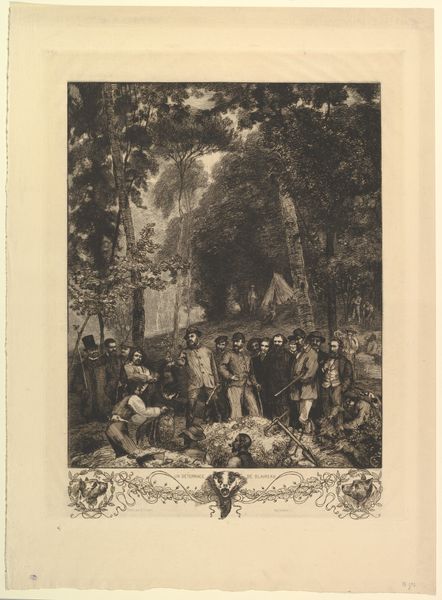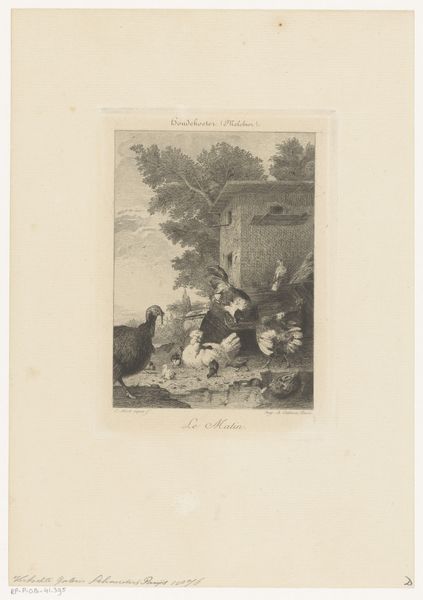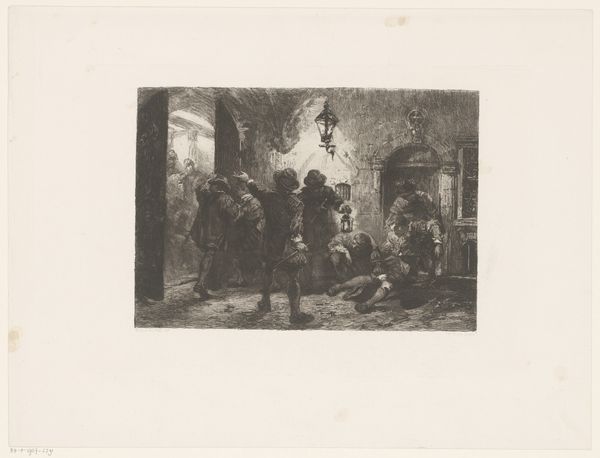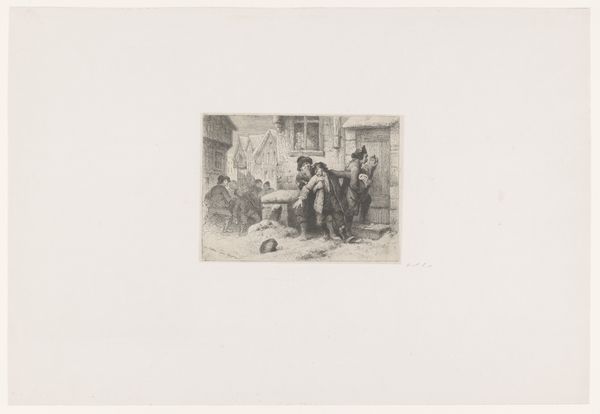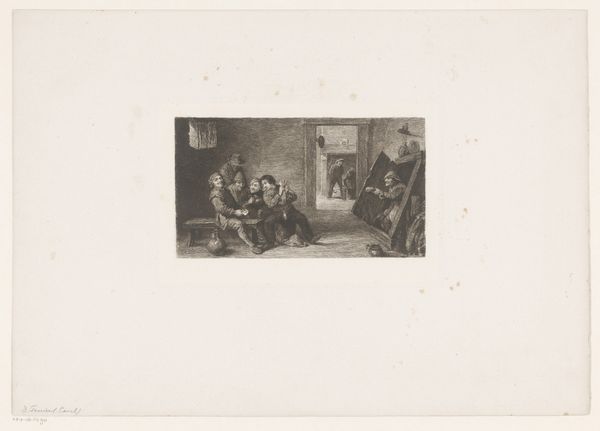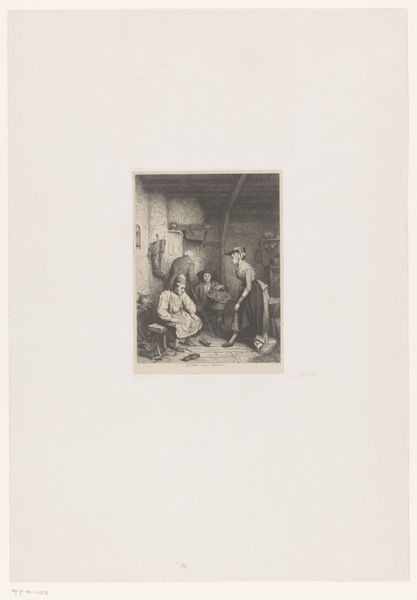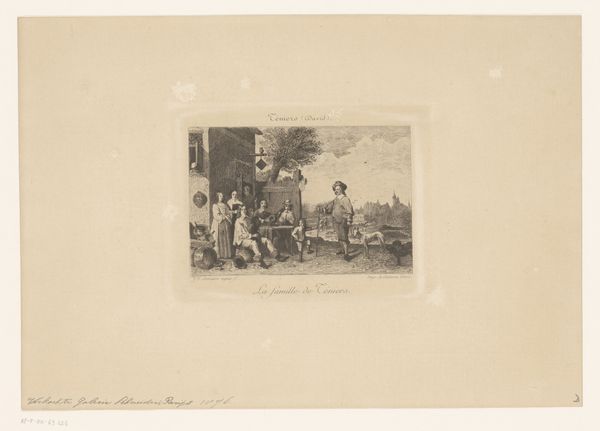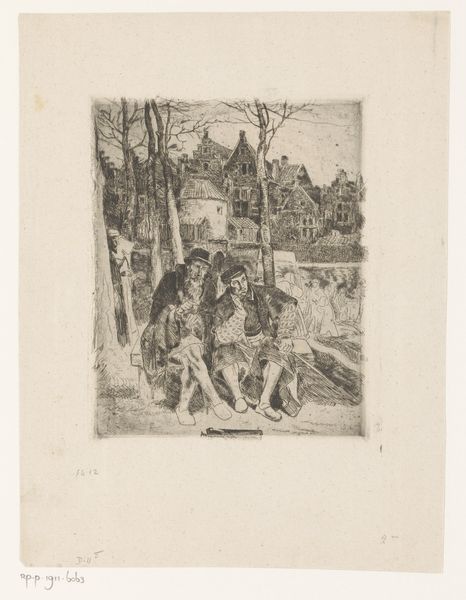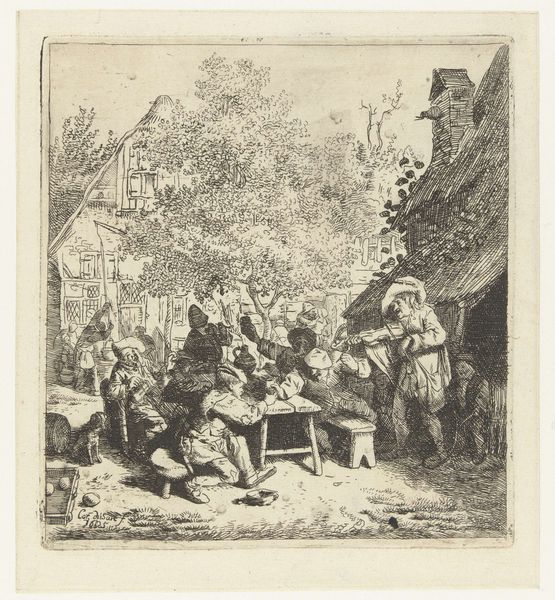
drawing, print, etching, paper
#
drawing
#
dutch-golden-age
# print
#
etching
#
paper
#
genre-painting
#
monochrome
Dimensions: height 254 mm, width 174 mm
Copyright: Rijks Museum: Open Domain
Curator: Ah, yes. Here we have "Gezelschap van kaartspelers onder een prieel," or "Company of Card Players under a Pergola," an etching by William Unger, made sometime between 1847 and 1932. Editor: It strikes me as an image drenched in everyday leisure. A world away from courtly affairs; there's such an intimacy about it, a closeness to its setting. Curator: It speaks to the democratization of leisure in Dutch society. Notice the pergola; the location itself frames this social activity. This etched print likely found its way into middle-class homes, making art accessible beyond the elite. Editor: Observe how the artist balances the distribution of light. See the canopy above their heads; this compositional tool acts as a visual anchor, providing depth and structuring the overall aesthetic. Curator: Unger's mastery of the etching technique allowed for mass production. Etching allowed for subtle lines and complex details, making these works relatively cheap to produce and distribute, connecting them directly to economic conditions and class aspirations. Editor: But consider, too, the human figures; their poses suggest an unfolding narrative. The subtle shifts in light and shadow sculpt them with incredible detail; note, also, the use of the monochromatic palette as its own artistic language, highlighting tonal variations, shape, and form, all combining to guide our interpretation of form and structure. Curator: The genre scene itself, focusing on common folk and everyday activities, was very popular during this period as literacy rates climbed and so, too, demand for reproducible images that reflected their interests. Prints like these served a crucial role in disseminating cultural values and norms. Editor: Seeing it altogether like this brings into focus the beauty of balance. The pergola and then the table of gamblers beneath are all caught and held by shape. Curator: The intersection of art and everyday life underscores the accessibility of visual culture during Unger's time. It's a fascinating view into the rise of the print market. Editor: It does. And it is where the beauty lies; structure and form work in synchronicity to showcase human experiences.
Comments
No comments
Be the first to comment and join the conversation on the ultimate creative platform.
